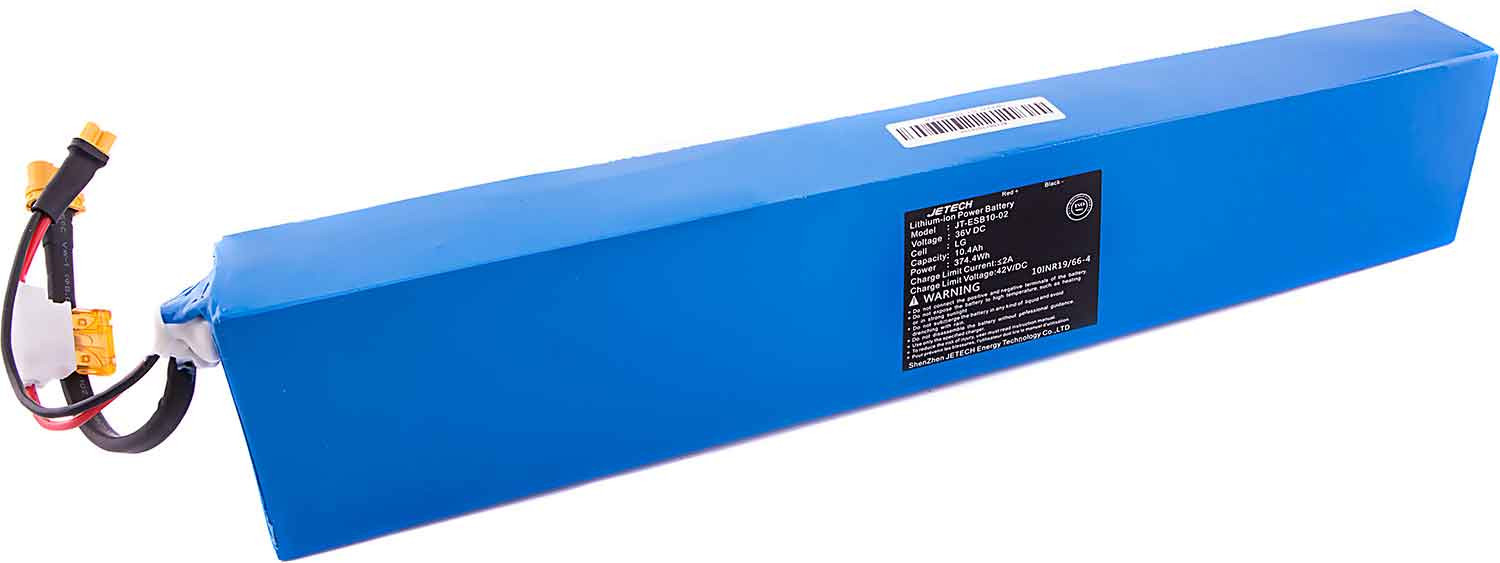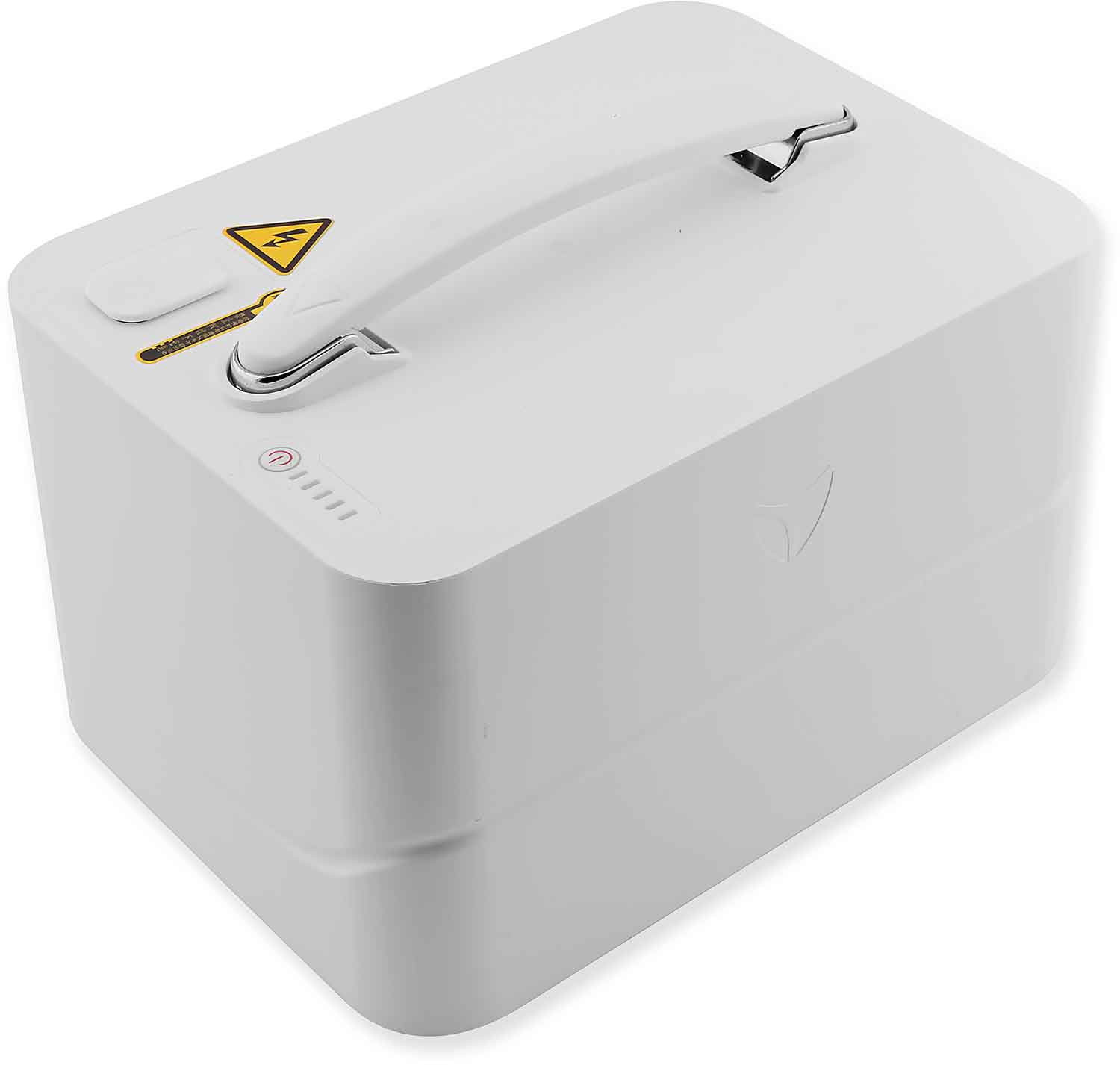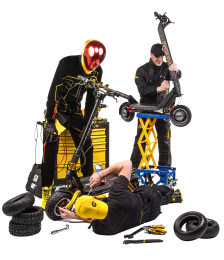Click for more results.
No produts were found.
Your cart is empty See the offer
The most expensive component of electric scooters is the battery, value of which often exceeds half the price of a new scooter. Therefore, it is very important that you take good care of your battery. By treating it properly and sensibly, you can extend its life by a few years. We bring you a handful of basic rules how to take care of your Li-ion battery so that it remains in good condition for many years.
The Li-ion batteries have been designed to work best in a standard indoor environment with temperature reaching 20-25°C. Their use in low or freezing temperatures reduces the available battery capacity due to chemical processes preventing all the stored energy to be utilized, and this limitation exists until the battery warms up again. Although high temperatures (35°C or more) increase the available capacity of a battery, on the other hand, they significantly shorten its serviceable life, particularly above 50°C.
If you want your battery to last as long as possible and not to lose its capacity, make sure that you use, store and charge it at room temperature in the long term. For instance, if you return home in winter months with a scooter that has been exposed to low or freezing temperatures, allow the scooter and battery to warm up to room temperature for several hours before recharging the battery. Conversely, during tropical summer days allow the scooter and battery to cool down before charging it. If possible, avoid charging your battery at temperatures below freezing or at temperatures significantly exceeding 35°C. Charging at these extreme temperatures shortens the serviceable life of your battery.

Discharging your Li-ion battery to 0% on a regular basis harms it. When a battery is fully discharged, there are gradual irreversible chemical reactions taking place inside it, which permanently reduce its capacity. However, you will damage your battery even more if you fully discharge it and then leave it in this completely discharged state for a long time. Therefore, avoid fully discharging the battery on a regular basis and definitely do not leave it fully discharged for an extended period as this could lead to a significant premature reduction of its capacity and problems associated with recharging it after long time.
After charging your battery to 100%, if possible do not leave it in this fully charged state for too long. When a battery is fully charged, there is a risk of lithium galvanizing on the battery's anode. This is especially true during hot summer months. For instance, if you come home on Friday with a battery discharged to about 30% and you know you won't need your scooter over the weekend, it is better to wait until Sunday evening to charge the battery. This reduces the time during which the battery is charged to 100% with the charger connected to it. If you plan to put your scooter away for a few days after fully charging it, and if you do not plan to ride it during that time, it is better to take a short trip with it and lower the battery charge a little. Before any long-term scooter storage lasting several months, it is best to leave the battery charged at just 40% and recharge it to this level once every 8-10 weeks.
If you want your battery to last as long as possible and with the least drop in its capacity, keep it charged between 25% and 80%. If you have a charger that allows you to set the maximum charging level, reduce it to 80%, as you can greatly extend the battery life by doing so. If you have a scooter with a range that can last several days on your daily trip to work and back, do not recharge your scooter every day. Rather charge it every second or third day when the battery level drops to about 25% upon returning home. Naturally, this only applies when you know that you will not need to ride anywhere else on a given day and you are good to go with a battery charged to 50% before leaving in the morning. The modern Li-ion batteries do not suffer from the so-called memory effect. It is not necessary to fully discharge them and then charge them back to 100% on a regular basis in order to maintain their maximum capacity. Regular incomplete charging, e.g. from 50% to 80%, does not represent a problem for them and does not damage them in the long run. However, if you suspect that the battery level indicator no longer shows correct data, or if your total battery capacity drops, all you need to do is to reformat the battery from time to time by discharging it below 15% and then charging to 100%.
Everyone loves to have a battery charged as quickly as possible. However, the truth is that very fast charging harms the battery and shortens its serviceable life in the long term. If you're not in a hurry and don't need to supercharge your scooter's battery, it is better that you use a slower charger that takes longer to charge the battery. Your battery will be less stressed and it will reward you with extended life. If you have a supercharger, only use the fast-charging option when absolutely necessary. Under normal circumstances, lower the charging current so that the battery is charged at a slower pace. Your battery will thank you for that.
If you observe regularly that your battery noticeably heats up while charging, this may indicate a problem with your particular charging unit or a poor condition of your battery that may be ready for replacement. In such case, we recommend that you visit a service center and have your charger and battery properly tested.

If you wish that your battery lasts as long as possible and in the best condition, avoid temperature extremes and very fast charging/discharging – those are the most important factors behind rapid deterioration of Li-ion batteries. By adding reasonable scooter use (riding without stressing the battery by applying maximum engine power for a long time, not exposing your scooter to frequent and long climbs), reducing the number of full charge cycles (only charge when really needed) and by not discharging the battery to 0% – you can successfully extend your battery life by up to several years.
Over the next few days, we will contact you to fine-tune the details.
Over the next few days, we will contact you to fine-tune the details.
We work hard to provide you with the best experience possible.
Over the next few days, we will contact you to fine-tune the details.
We're sorry you don't have enough information about your order. We always try to continuously inform our customers about everything. Please fill in the information below and we shall get back to you as soon as possible, after checking the situation.
We are grateful for all positive feedback and recommendations. It motivates us in our everyday work.
We are sorry that something is wrong. Please provide the most accurate description of your situation so that we may check and resolve it promptly. Your complaint will be received not only by our employees but also by the management and owners of Max Blinker company.
Thank you for your message. We will get back to you as soon as possible.
Help us to improve. Do you have any suggestions?
Every nice word we hear from you will make us happy. Contact us.
Did you find any error in the text? We shall appreciate if you let us know.
Thank you for your message. We will get back to you as soon as possible.
 Professional service service@maxblinker.com +49 304 2208 222 Order a service Warranty online More info about the service
Professional service service@maxblinker.com +49 304 2208 222 Order a service Warranty online More info about the service  Escooter Guide Read our extensive guide on how to safely ride your electric scooter. It is full of information of interest to both beginners and advanced riders. Read the Guide
Escooter Guide Read our extensive guide on how to safely ride your electric scooter. It is full of information of interest to both beginners and advanced riders. Read the Guide  Independent Testing We scientifically verify manufacturers’ claims about range, performance and top speed. More info
Independent Testing We scientifically verify manufacturers’ claims about range, performance and top speed. More info Voltride meníme na Max Blinker
More info